A Convex Hull-Based Machine Learning Algorithm for Multipartite Entanglement Classification
Abstract
1. Introduction
2. The Construction of the Classifier
2.1. Convex Hull Approximation
2.2. A Tangent-Based Classifier via CHA
2.2.1. Voronoi Diagram
2.2.2. Minimum Hyper-Body
2.3. Combining CHA and Machine Learning
2.3.1. Data Preparation
2.3.2. Extended Data Form
2.3.3. Ensemble Learning
3. The Performance of the Classifier
3.1. Training Phase of the Predictors
3.2. Testing Phase of the Predictors
3.2.1. Algorithm for Calculating the
- (1)
- Randomly sample a state from a uniform distribution according to the Haar measure;
- (2)
- Randomly sample a state from a uniform distribution according to the Haar measure;
- (3)
- Return .
3.2.2. Algorithm for Finding Critical Points
- (1)
- Initiate p as the feature vector of , and set ;
- (2)
- Update ;
- (3)
- Now, . Pick to be the critical points satisfying . Update ;
- (4)
- For each , suppose is the feature vector of . Sample the neighbor of ; that is, to randomly generate two Hermitian operators , satisfying . Let be a random number in . Set . Set , where is the feature vector of ;
- (5)
- Update and go back to step 2.
3.2.3. Algorithm for Calculating an Approximate Tangent Hyperplane
- (1)
- Divide the n critical points into 50 parts, each of which contains m critical points. Generate a Voronoi diagram via each part. Here, we directly implement the function voronoin.m of the Qhull toolbox [30] to generate the n-dimensional Voronoi diagram.
- (2)
- Find the minimum hyper-body via the adjacent target points. Generate the corresponding tangent hyperplane. Decide which states are GHZ states according to the hyperplane.
- (3)
- Repeat step 2 50 times or until all the diagrams have been used.
4. Conclusions
Funding
Institutional Review Board Statement
Informed Consent Statement
Data Availability Statement
Acknowledgments
Conflicts of Interest
References
- Thumwanit, N.; Lortaraprasert, C.; Yano, H.; Raymond, R. Trainable Discrete Feature Embeddings for Quantum Machine Learning. In Proceedings of the 2021 IEEE International Conference on Quantum Computing and Engineering (QCE), San Francisco, CA, USA, 5–9 December 2021; pp. 479–480. [Google Scholar] [CrossRef]
- Yi, T.; Wang, J.; Xu, F. Optimizing Hamiltonian control using quantum machine learning method. In Proceedings of the 2021 International Conference on Electronic Information Engineering and Computer Science (EIECS), Changchun, China, 23–26 September 2021; pp. 529–532. [Google Scholar] [CrossRef]
- Quiroga, D.; Date, P.; Pooser, R. Discriminating Quantum States with Quantum Machine Learning. In Proceedings of the 2021 IEEE International Conference on Quantum Computing and Engineering (QCE), Broomfield, CO, USA, 17–22 October 2021; pp. 481–482. [Google Scholar] [CrossRef]
- Yano, H.; Suzuki, Y.; Itoh, K.M.; Raymond, R.; Yamamoto, N. Efficient Discrete Feature Encoding for Variational Quantum Classifier. IEEE Trans. Quantum Eng. 2021, 2, 1–14. [Google Scholar] [CrossRef]
- Tacchino, F.; Barkoutsos, P.K.; Macchiavello, C.; Gerace, D.; Tavernelli, I.; Bajoni, D. Variational Learning for Quantum Artificial Neural Networks. IEEE Trans. Quantum Eng. 2021, 2, 1–10. [Google Scholar] [CrossRef]
- Zhang, Y.Q.; Yang, L.J.; He, Q.L.; Chen, L. Machine learning on quantifying quantum steerability. Quantum Inf. Process 2020, 19, 263. [Google Scholar] [CrossRef]
- Einstein, A.; Podolsky, B.; Rosen, N. Can quantum-mechanical description of physical reality be considered complete? Phys. Rev. 1935, 47, 777. [Google Scholar] [CrossRef]
- Ekert, A.K. Quantum Cryptography Based on Bell’s Theorem. Phys. Rev. Lett. 1991, 67, 661. [Google Scholar] [CrossRef]
- Bennett, C.H.; Brassard, G.; Cr epeau, C.; Jozsa, R.; Peres, A.; Wootters, W.K. Teleporting an unknown quantum state via dual classical and Einstein-Podolsky-Rosen channels. Phys. Rev. Lett. 1993, 70, 1895. [Google Scholar] [CrossRef]
- Mortezapour, A.; Nourmandipour, A.; Gholipour, H. The effect of classical driving field on the spectrum of a qubit and entanglement swapping inside dissipative cavities. Quantum Inf. Process 2020, 19, 136. [Google Scholar] [CrossRef]
- Moslehi, M.; Baghshahi, H.R.; Mirafzali, S.Y. Upper and lower bounds for Tsallis-q entanglement measure. Quantum Inf. Process 2020, 19, 413. [Google Scholar] [CrossRef]
- Paul, B.; Mukherjee, K.; Karmakar, S.; Sarkar, D.; Mukherjee, A.; Roy, A.; Bhattacharya, S.S. Detection of genuine tripartite entanglement in quantum network scenario. Quantum Inf. Process 2020, 19, 246. [Google Scholar] [CrossRef]
- Susulovska, N.A.; Gnatenko, K.P. Quantifying Geometric Measure of Entanglement of Multi-qubit Graph States on the IBM’s Quantum Computer. In Proceedings of the 2021 IEEE International Conference on Quantum Computing and Engineering (QCE), Broomfield, CO, USA, 17–22 October 2021; pp. 465–466. [Google Scholar] [CrossRef]
- Svetlichny, G. Distinguishing three-body from two-body nonseparability by a Bell-type inequality. Phys. Rev. D 1987, 35, 3066. [Google Scholar] [CrossRef]
- Greenberger, D.M.; Horne, M.A.; Zeilinger, A. Going beyond Bell’s theorem. In Bell’s Theorem, Quantum Theory, and Conceptions of the Universe; Springer: Dordrecht, The Netherlands, 1989. [Google Scholar]
- Zeilinger, A.; Horne, M.A.; Greenberger, D.M. Proceedings of Squeezed States and Quantum Uncertainty. NASA Conf. Publ. 1992, 3135, 73. [Google Scholar]
- Gühne, O.; Tóth, G. Entanglement detection. Phys. Rep. 2009, 474, 1–75. [Google Scholar] [CrossRef]
- Bennett, C.H.; Popescu, S.; Rohrlich, D.; Smolin, J.A.; Thapliyal, A.V. Exact and asymptotic measures of multipartite pure-state entanglement. Phys. Rev. A 2000, 63, 012307. [Google Scholar] [CrossRef]
- Peres, A. Separability criterion for density matrices. Phys. Rev. Lett. 1996, 77, 1413. [Google Scholar] [CrossRef] [PubMed]
- Rudolph, O. Further results on the cross norm criterion for separability. Quantum Inf. Proc. 2005, 4, 219. [Google Scholar] [CrossRef]
- Chen, K.; Wu, L.A. A matrix realignment method for recognizing entanglement. Quant. Inf. Comput. Quant. Inf. Comp. 2003, 3, 193. [Google Scholar]
- Horodecki, M.; Horodecki, P.; Horodecki, R. Separability of mixed states: Necessary and sufficient conditions. Phys. Lett. A 1996, 1, 223. [Google Scholar] [CrossRef]
- Chen, X.; Jiang, L. What Criterion Can We Get From Precise Entanglement Witnesses? IEEE J. Sel. Areas Commun. 2020, 38, 557–567. [Google Scholar] [CrossRef]
- Lu, S.; Huang, S.; Li, K.; Li, J.; Chen, J.; Lu, D.; Ji, Z.; Shen, Y.; Zhou, D.; Zeng, B. Separability-Entanglement Classifier via Machine Learning. Phys. Rev. A 2018, 98, 012315. [Google Scholar] [CrossRef]
- Hossain, M.Z.; Amin, M.A. On Constructing Approximate Convex Hull. Am. J. Comput. Math. 2013, 3, 11–17. [Google Scholar] [CrossRef]
- Chen, J. A raster-based method for computing Voronoi diagrams of spatial objects using dynamic distance transformation. Int. J. Geogr. Inf. Sci. 1999, 13, 209–225. [Google Scholar] [CrossRef]
- Bertlmann, R.A.; Krammer, P. Bloch vectors for qudits. J. Phys. A Math. Theor. 2008, 41, 235303. [Google Scholar] [CrossRef]
- Freund, Y.; Schapire, R.E. A Decision-Theoretic Generalization of On-Line Learning and an Application to Boosting. J. Comput. Syst. Sci. 1997, 55, 119–139. [Google Scholar] [CrossRef]
- Johnston, N. QETLAB: A MATLAB Toolbox for Quantum Entanglement. Version 0.9. Available online: http://www.qetlab.com (accessed on 12 January 2016). [CrossRef]
- Barber, C.B.; Dobkin, D.P.; Huhdanpaa, H.T. The Quickhull Algorithm for Convex Hulls. ACM Trans. Math. Softw. 1996, 22, 469–483. [Google Scholar] [CrossRef]
- Das, S.; Chanda, T.; Lewenstein, M.; Sanpera, A.; Sen De, A.; Sen, U. The separability versus entanglement problem. In Quantum Information: From Foundations to Quantum Technology Applications; Wiley: Hoboken, NJ, USA, 2017. [Google Scholar]
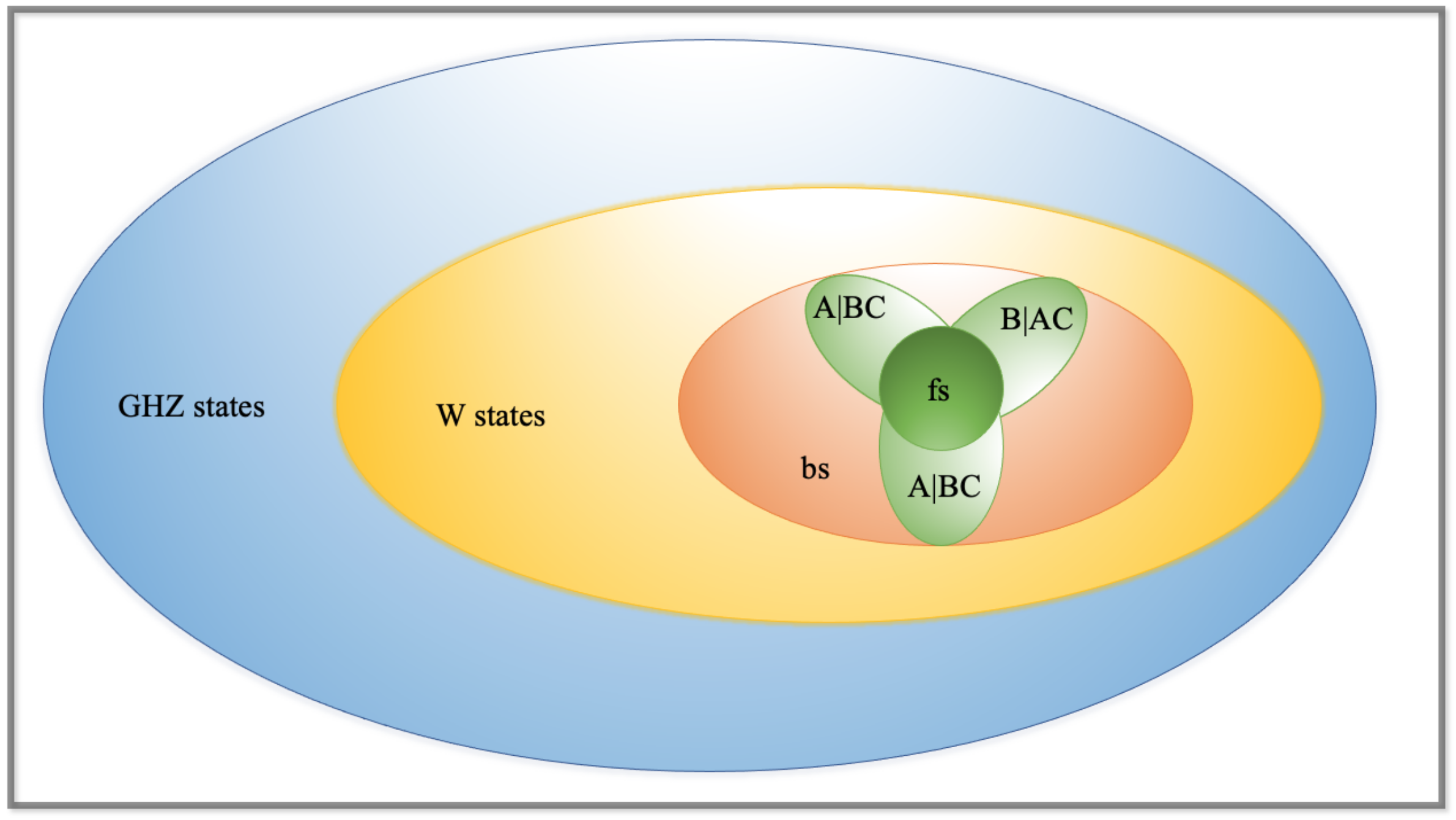
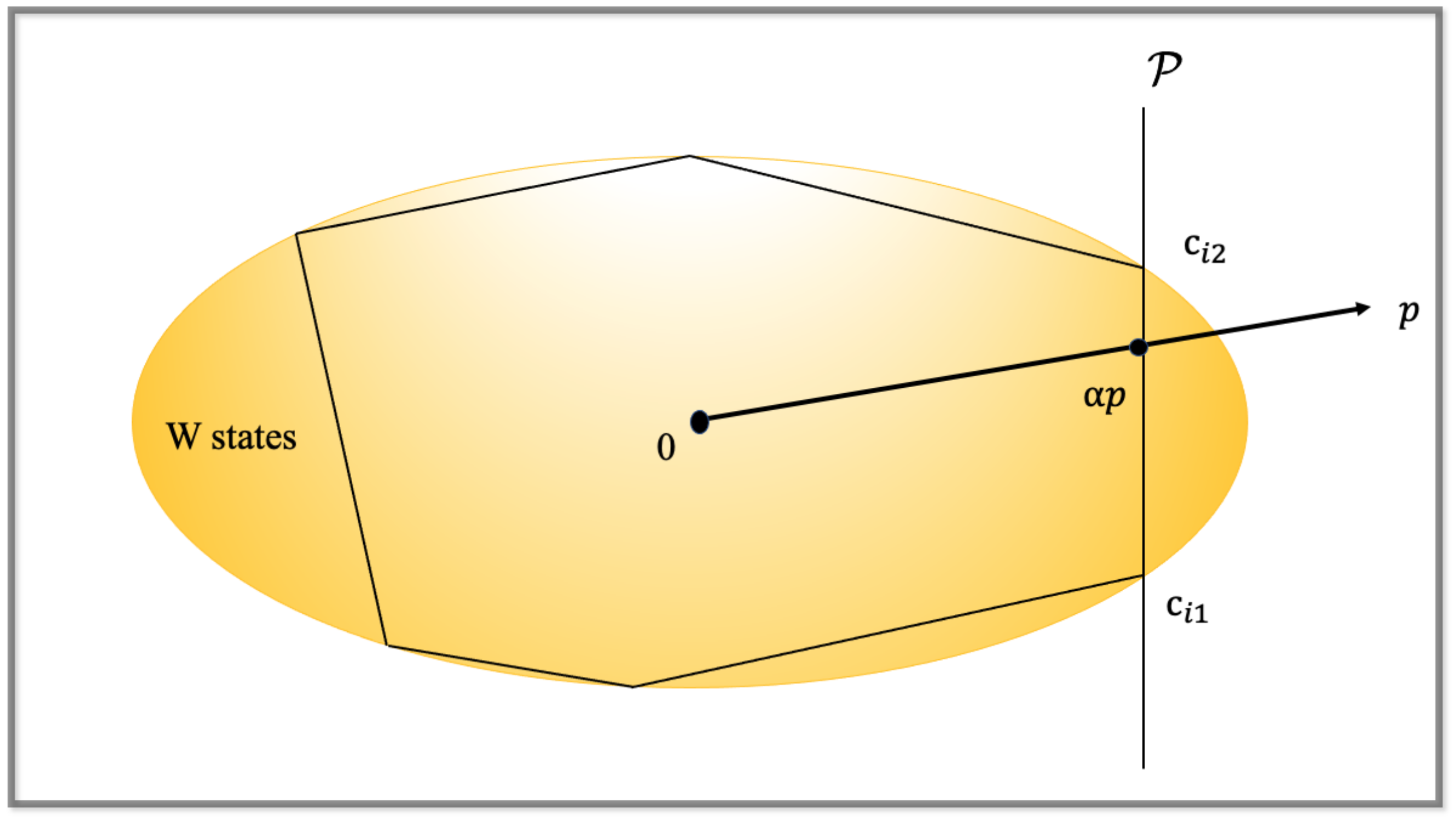
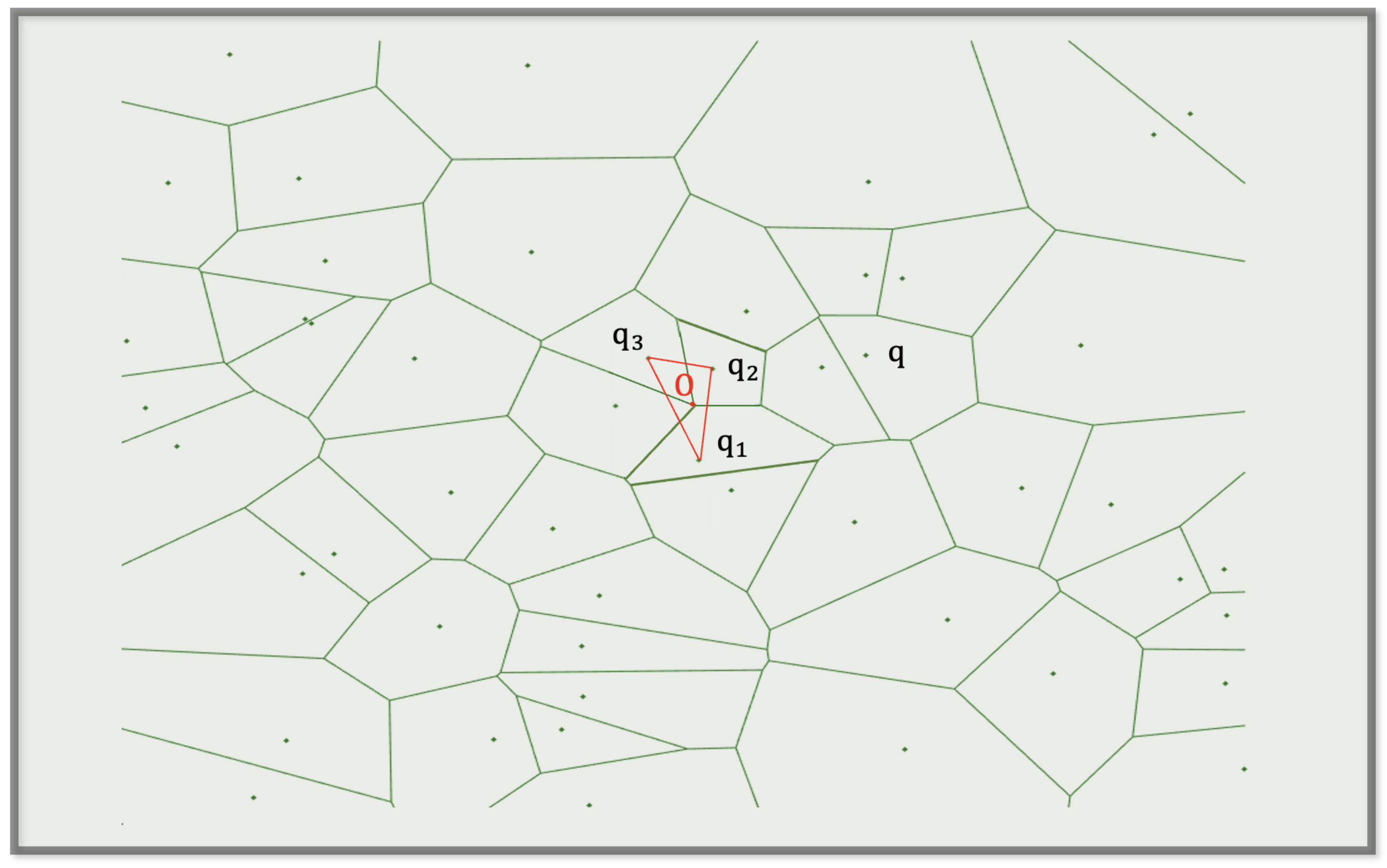
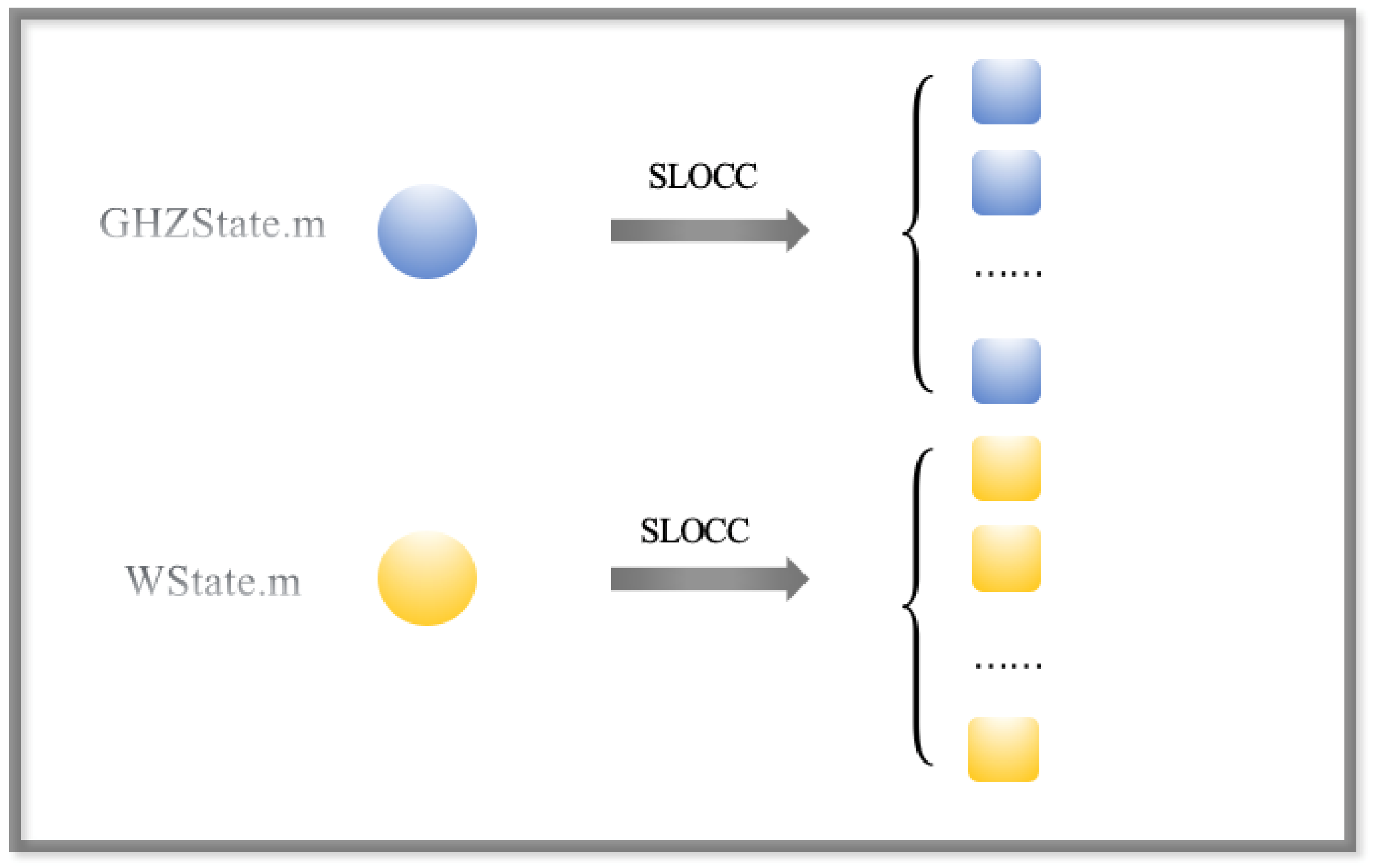
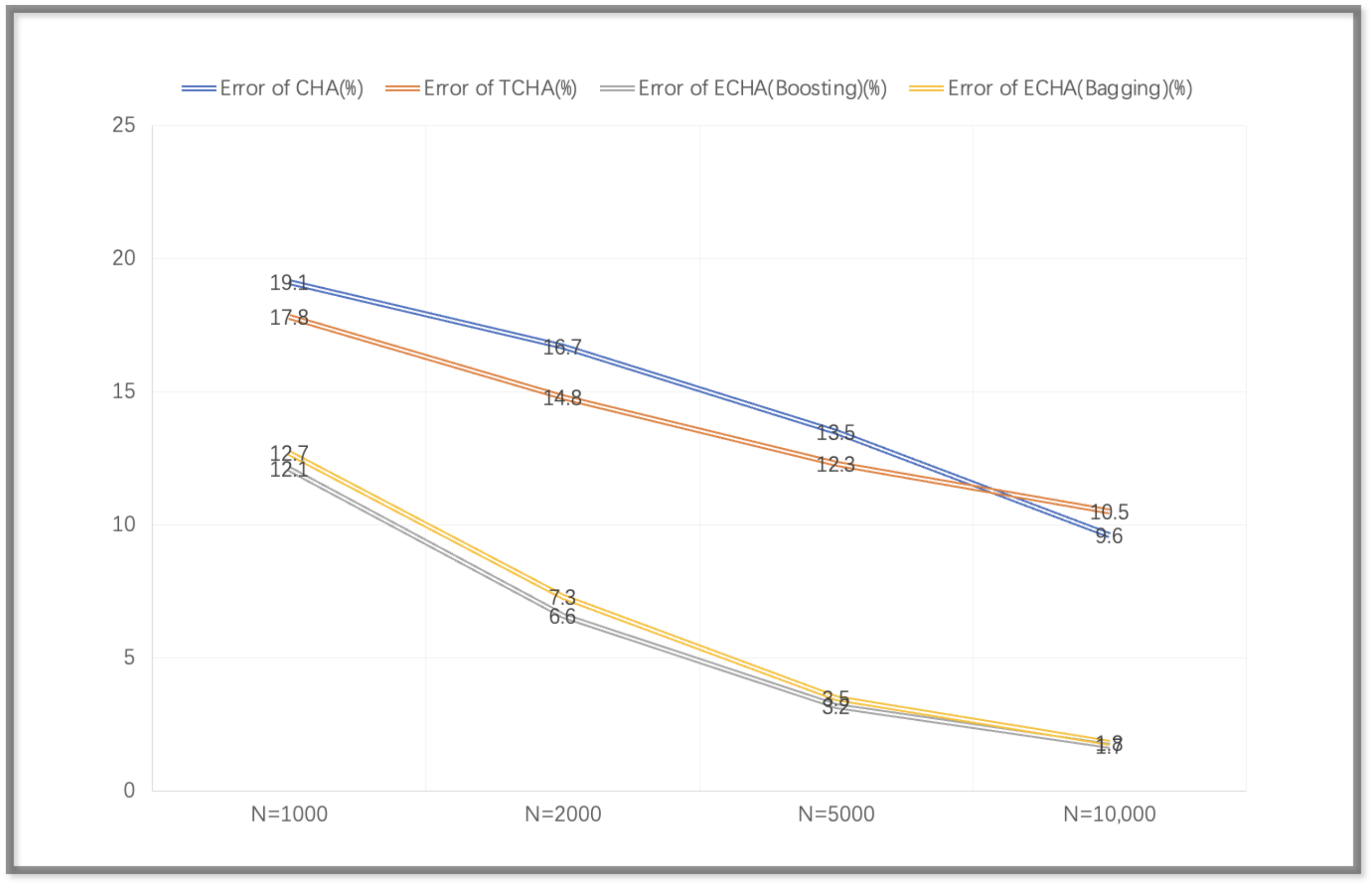

| Method | SVM | Decision Tree | Bagging | Boosting |
|---|---|---|---|---|
| Error (%) | 14.1 | 25.2 | 18.8 | 17.3 |
Publisher’s Note: MDPI stays neutral with regard to jurisdictional claims in published maps and institutional affiliations. |
© 2022 by the author. Licensee MDPI, Basel, Switzerland. This article is an open access article distributed under the terms and conditions of the Creative Commons Attribution (CC BY) license (https://creativecommons.org/licenses/by/4.0/).
Share and Cite
Wang, P. A Convex Hull-Based Machine Learning Algorithm for Multipartite Entanglement Classification. Appl. Sci. 2022, 12, 12778. https://doi.org/10.3390/app122412778
Wang P. A Convex Hull-Based Machine Learning Algorithm for Multipartite Entanglement Classification. Applied Sciences. 2022; 12(24):12778. https://doi.org/10.3390/app122412778
Chicago/Turabian StyleWang, Pingxun. 2022. "A Convex Hull-Based Machine Learning Algorithm for Multipartite Entanglement Classification" Applied Sciences 12, no. 24: 12778. https://doi.org/10.3390/app122412778
APA StyleWang, P. (2022). A Convex Hull-Based Machine Learning Algorithm for Multipartite Entanglement Classification. Applied Sciences, 12(24), 12778. https://doi.org/10.3390/app122412778







